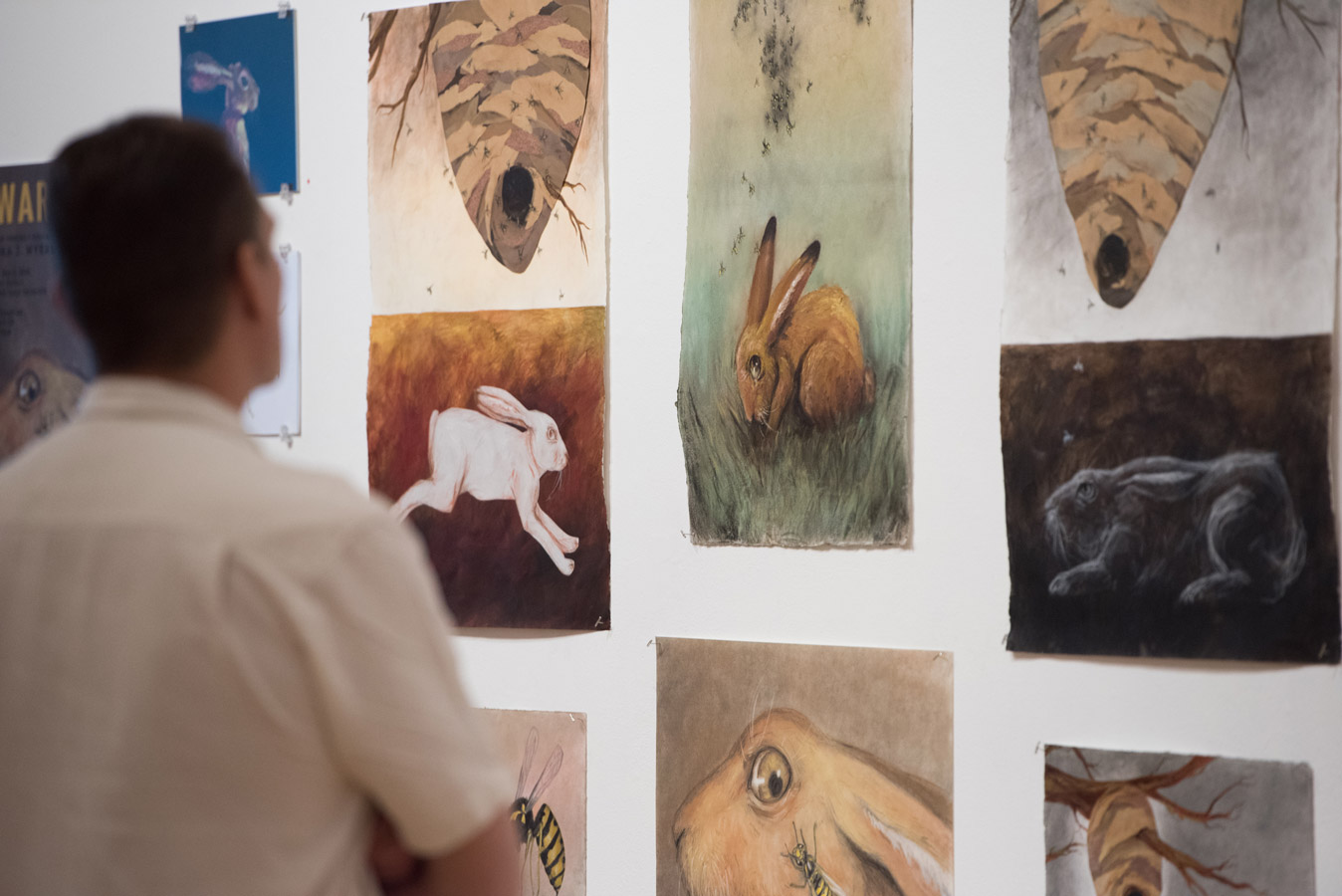Senior Projects, Fall 2024
December 6 - 13, 2024
Opening Reception and Artists' Presentation
Thursday, December 5, 5:00-7:00 p.m.
Faculty mentor, Andy Owen
At the end of their studies, art majors are required to develop and present a coherent
body of self-generated work. This exhibition combines their knowledge of techniques
and concepts while drawing on research of historical and contemporary artists. Each
senior art major in the exhibition designs and creates a unique installation that
combines their technical skills and conceptual vision.
Sponsored by The Layden Family Foundation, The Smith Family Foundation of Estero, and WGCU Public Media.
Image Credit: Arianna J. Myers, Swarm, 2018, Installation view of Senior Project
-
Hailey Doyle INTERCONNECTED
Toggle More Info
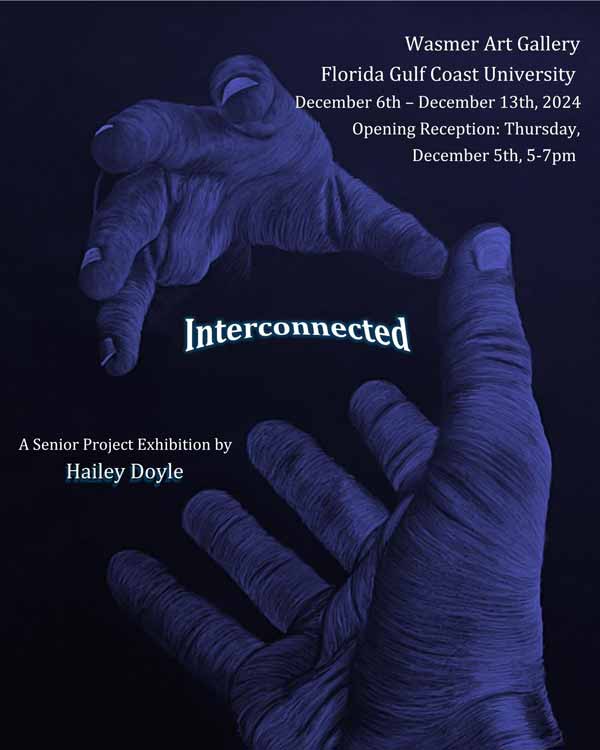
“And we have come to know and to believe in the love God has for us. God is love, and whoever remains in love remains in God and God in him”
1 John 4:16
The value of a relationship runs deep. The origin of relationship begins with the Bible. In Genesis, from the very beginning of creation, God had relationship in mind. The Earth began with the creation of man. The Lord created humans specifically in His image. “Imago Dei” is Latin for “Image of God”. This reveals that we as humankind are created in the Image of God. We are created to be in union with Him, to have relationship with Him. He designed us for love because He longs for communion and closeness to us. His love for us exceeds anything or anyone. God is love, and love casts out all fear and it cannot be shaken or stolen (1 John 4:18). Since we have affirmation from the Word of God on who He says we are, and how we are created specifically for relationship with Him, we can trust in Him and His word to be true.
Being able to experience the presence and vastness of God’s love, I have learned what true love looks like and that there is no other person or thing that compares or will satisfy the longing in my soul for the Lord. This leads to my senior project. This intimate thing that is the foundation of my life is a personal journey that I want to share with those around me and express the importance of. The ways that I have chosen to display these expressions are through the closeness and intimacy of hands, and ceramics which correlates to the very beginning of Gensis. The Word states, “the Lord formed the man from the dust of the ground” (Genesis 2:7). Dust can be associated with clay or dirt from the ground. Our very beginning originates with the Earth, where clay originates. I concluded that I wanted to add this important detail in this series of work and express the relationship between creation and creator with organic forms of clay that connect.
This collection of work is comprised of organic ceramic forms and colored pencil hand drawings drawn from different points of view. Regarding my method, I began with sketching different kinds of hands interacting and in different color combinations. I came to the result of creating the drawings in multiple vibrant pastel colors. They have been drawn from different perspectives to communicate my concept. The linework and subjective use of color in my drawings is intentionally expressionistic to capture the emotion of each subject. The scale is larger than life because of the impact and magnitude of the interconnection that Christ has with us. It is a connection that cannot be broken (Romans 8:39). Considering the ceramics portion, I worked through creating multiple different small models of forms to decide on the structures I produced. The ceramic pieces I have created are organic forms that will represent the interconnections between the Lord and His creation. They form a unity by molding the clay to develop two structures that connect as one, creating a round configuration. This depicts the oneness of the covenant between us and the Lord.
“Dear friends, since God so loved us, we also ought to love one another. No one has ever seen God; but if we love one another, God lives in us and his love is made complete in us. This is how we know that we live in him and he in us: He has given us of his Spirit”.
1 John 4:11-13
-
Maya Dudley SILENT CRIES
Toggle More Info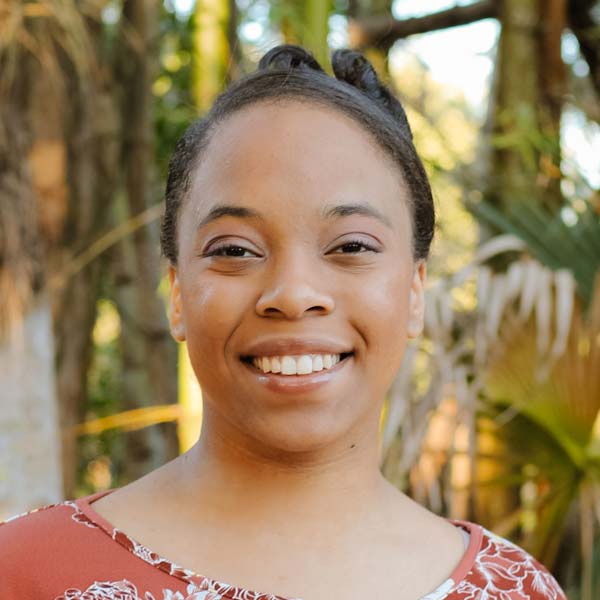
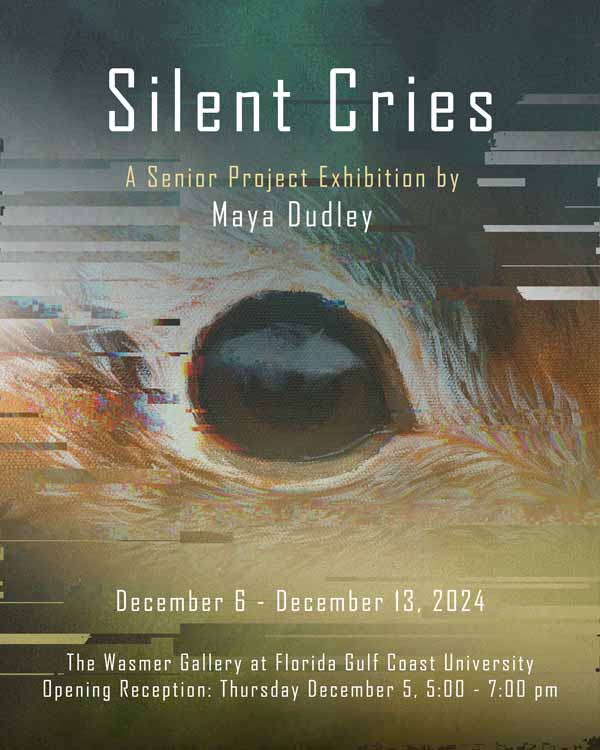
My exhibition “Silent Cries,” features four specific endangered species endemic to Florida, highlighting the need to protect them and conserve the environment. The intent is to give a voice to the voiceless and showcase that if these animals aren’t protected there will only be remnants of them in the digital world. Many species of animals have gone down in numbers and are losing their natural habitats at an alarming rate. I have noticed this especially in Florida because of the increase in urban sprawl and human development. Human development encroaches on wildlife territory and destroys natural landscape, leading to the loss of habitat and biodiversity in Florida and all over the world. Although there are many endangered animals, there are some that don’t get the same attention as others do. The endangered species featured in this project are the Key deer, Lower Keys marsh rabbit, Florida grasshopper sparrow, and the Anastasia Island beach mouse, all of which are lesser known but are all still important in the natural world.
I have always loved animals and have gained even more appreciation for nature throughout the years. I have recently learned about endangered animals that I and possibly any other common person have never heard of before. Finding out that these animals exist inspired me to bring them to light. I have seen so much destruction of the natural environment around my area, especially with the increase in residential buildings, and it saddens me seeing Florida’s natural landscape disappear and its inhabitants along with them. I feel like these species deserve equal attention as the more well-known endangered species that often come to mind. Each species plays an essential role in the natural world and if even one disappears, everything else crumbles. These paintings are meant to showcase these species to grab the attention of the viewers and bring awareness about their threat of extinction. I want to gain the sympathy of others and hope to make them care enough to want to make a change to prevent these species from existing only in the digital world.
For my project I started out looking for photos of endangered animals endemic to Florida that I and other people may not know about. Taking inspiration from the photography of Mark Bias, Francesco Ungaro, and Yauheni Kopach, I closely followed the photos of these species to capture the life, features, and details of these animals. I also altered the photos to make the colors a bit more vibrant, the backgrounds blurred and add the glitch effect I wanted for the paintings. I chose acrylic paint since it enables me to use color to express what the species and the background would look like after being digitally edited and outside reality. These endangered
species are painted in a more realistic style while the background is more abstract and unfocused. This places emphasis on each species as the focus of each painting. Painter’s tape was then used to create the crisp shapes I wanted for the glitches over top of the species and background. Because the point is to grab the attention of the viewer, these were done in a large size to serve as a conversation starter.
-
Taylor Nagy UNNATURAL SELECTION
Toggle More Info
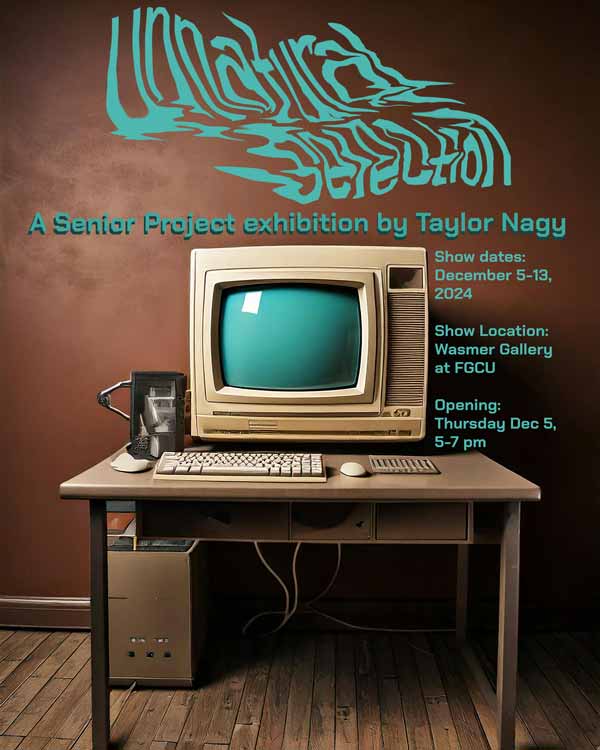
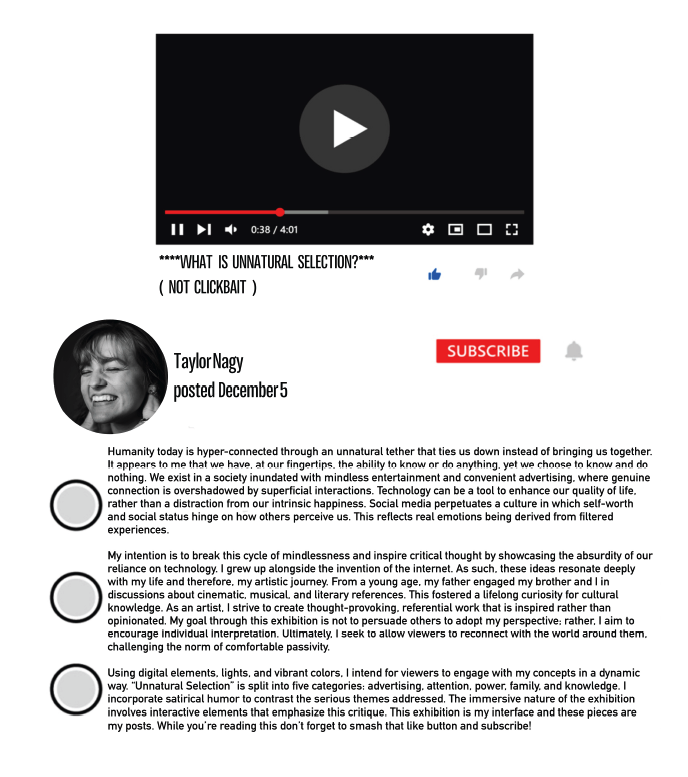
-
Kayla Peralta LA QUISQUEYA
Toggle More Info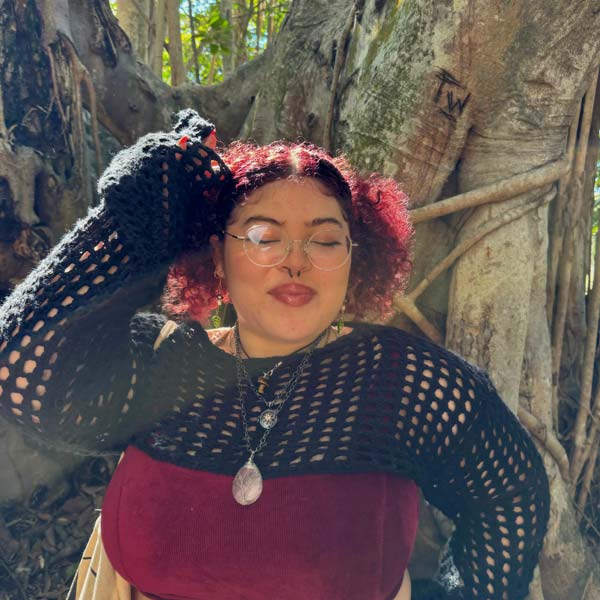
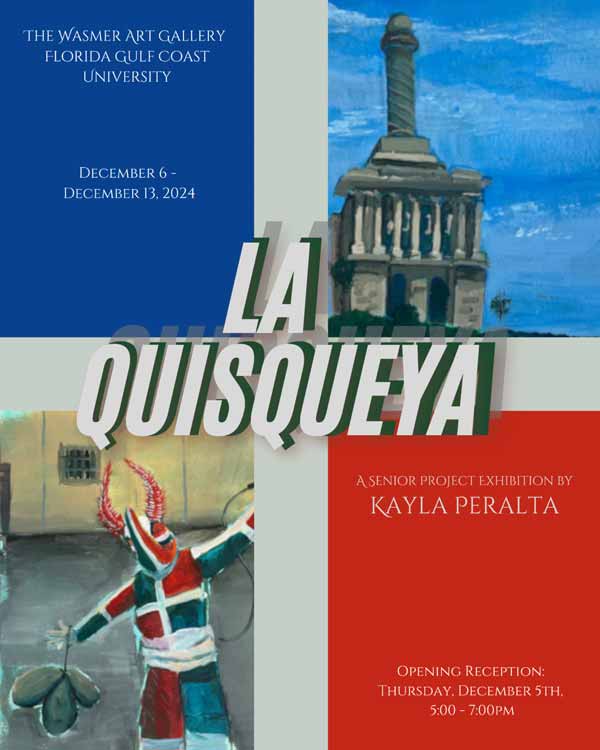
Many first-generation immigrants often feel a sense of displacement, battling with the guilt of “not being Hispanic enough”. Recent statistics indicate that over 11% of Americans with Hispanic heritage do not identify as Hispanic or Latino, highlighting the nuanced and often conflicting nature of self-identification. This disconnection from their cultural roots can stem from feelings of estrangement from their heritage and the pressure of cultural expectations. Children of immigrants, in particular, often face the challenge of reconciling the cultural clashes between American society and their immigrant households. This struggle can lead to guilt and shame as they navigate their dual identities. Additionally, the generational decline in engagement with Hispanic cultural activities further complicates this landscape, suggesting a fading connection to one’s roots. Ultimately, the experience of these children reflects the complexities of living between two worlds, each with its expectations and norms.
As a first-generation immigrant myself, those feelings of displacement and guilt are not new to me. I have struggled with my identity for a while now and I yearn to feel a connection towards my homeland. Thus, I began a journey to understand my cultural identity and that sense of belonging. I’ve researched the Dominican Republic’s traditions, festivals, culture, and history. I aim to honor my Dominican heritage by representing memories shared throughout my family, and how I remember the island. In my senior exhibition, I explore these themes through multimedia paintings. Having gone through a series of photos in an album that my family stored, inspired me to focus on reminiscence of the Caribbean. In some pieces, I incorporate symbolic markings from my culture, merging them with contemporary elements to create a dialogue between the past and the present. This becomes a way to reconcile parts of myself, allowing me to transform feelings of alienation into a celebration of my multicultural existence.
In my senior project, I wanted to help heal and understand my identity more. By constructing these paintings, there is a focus on memories, experiences, and stories of the Caribbean. I aim to share the vibrancy and richness of my culture with my peers. Some of these paintings are done on canvas with acrylic paint. Others are made on masonite boards with mixed media incorporated in. With my experience in creating 3D sculptures and adding textures to my paintings, I wanted the audience to have a sense of realism. To make this happen, I took a piece of masonite board and sketched out my initial image. Once completed, I used materials such as cardboard, plaster, air-dry clay, and newspaper to formulate the 3D aspects of the painting. Allowing the material to dry overnight, I sanded and refined the feature. After all that, I finished painting the details with acrylic paint.
-
Jennifer Rendon EVERLASTING PEACE
Toggle More Info
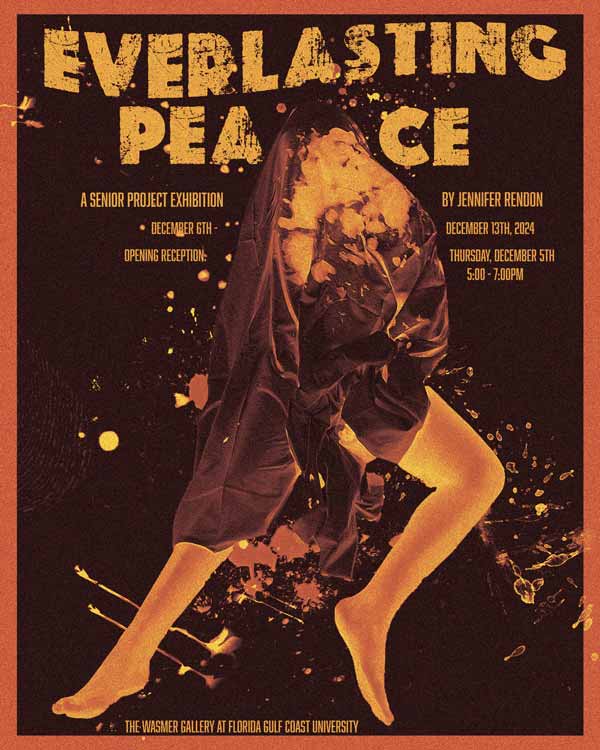
The central theme of my work revolves around the inevitability of death and the raw, unfiltered emotions that arise in its presence. Each of my paintings explores a distinct encounter with loss, capturing not only the physical consequences of death but also the overwhelming weight of the emotions tied to it. The imagery I use, whether it’s a gunshot victim lying on a bathroom floor, a woman grieving the pain of a miscarriage, a person submerged in a pool of their own blood, or a woman cradling a dead lamb serves as a visual exploration of moments where life and death collide in striking and visceral ways. These moments force us to confront the fragility of our existence, highlighting the uncomfortable realities we often shy away from in daily life. My aim is to present these scenes as a way to challenge viewers to reflect on the deeper, often avoided, aspects of mortality, what it truly means to experience loss, to grieve, and ultimately, to face the inescapable certainty of death.
My work is intensely personal, rooted in my own contemplations about death and the delicate nature of life. For many, death is an abstract fear, something distant and unknown, but for me, it represents something more familiar, something I have come to accept, and even find a form of peace within. This acceptance is what drives my creative process and forms the foundation for the pieces I create. Each painting serves as a visual dialogue with mortality, whether it is the stark aftermath of violence, the quiet sorrow of a lost life, or the unsettling serenity of a woman caressing a death itself. These moments are not just about death as an end, but about death as a force that disrupts, provokes, and invites reflection. I strive to create work that compels viewers to pause and confront their own mortality, questioning what death means to them, and how they cope with the fragile balance between life and loss. By portraying these raw, often unsettling moments, I seek to evoke not only discomfort but a deeper sense of introspection. My goal is to challenge the viewer, to push them beyond their initial shock or unease, and encourage them to consider the transient nature of life. I want my work to serve as a mirror for the viewer’s own thoughts and emotions regarding death—whether it elicits fear, acceptance, or perhaps even a strange sense of peace, much like the one I have found. Through these confrontations with mortality, I hope to open a conversation about the complex emotions tied to loss, and in doing so, allow viewers to reflect on their own relationship with death, life, and everything in between.
For this series, I built each canvas entirely by hand, starting with raw lumber to construct the stretcher bars, carefully assembling sturdy frames. Once the frames were complete, I stretched canvas material tightly over them, ensuring an even, durable surface for painting. This hands-on approach allowed me to control every detail, from the structure to the texture. I used a combination of acrylic and oil paints in order to create varying textures and depths. To ensure accuracy, I photographed each scene myself and projected the images onto the canvas, which helped me achieve precise outlines and intricate details before diving into the painting process.
.
-
Isaiah Torres WORLD DANCE
Toggle More Info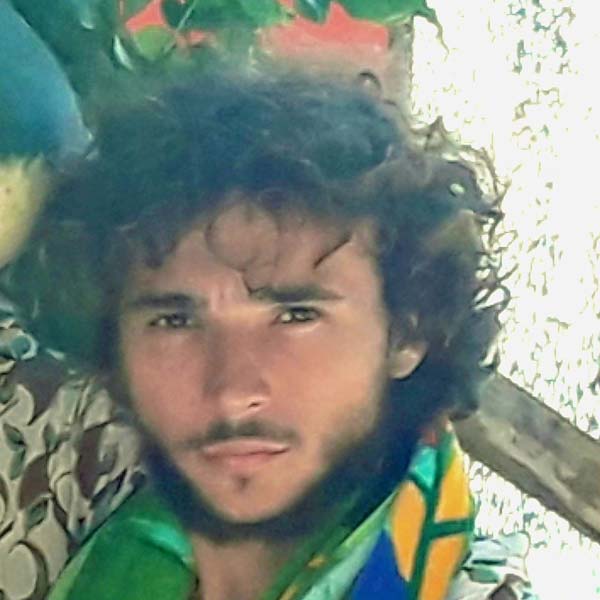
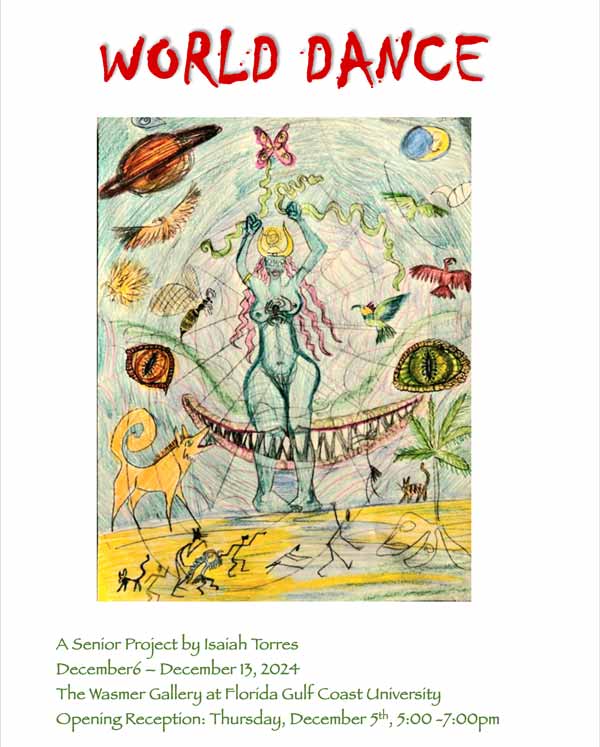
I, as a being of this earth, have always been interested in the world around me, the art, the music, the people, animals and plants. I have always known that it is all interconnected. It is a feeling, a rhythm, a dance….
When approaching art, I tend take an intuitive approach and let the art guide itself. Using my love of nature and free flowing thought, the art informs the artist.
This project World Dance is a cosmo gram, showing the world’s history; and the history and migration of people in our place, and time and seasoned space. The traces of mythology, events, and influences that created our modern era. The origins of human behaviors and customs and how they diverge and converge.
One group could see singing and dance as arbitrary and childlike to amuse oneself, yet another would revere dance as an essential aspect of life crucial for survival and sanity. My ancestors would heal themselves through music. The more a people suffer the more deeply meaningful and beautiful their music; the more powerful their dance.
Dance is a way all humans can connect to their ancestors and roots regardless of their origins or backgrounds. Dance connects the spiritual & physical realms. The collective unconscious is tapped into when music is being played or conceived and created. We need rhythm, tune and harmony to survive as a species.
Beliefs within a culture are all relative. Customs are created out of necessity. No customs are truly universal. People of different cultural backgrounds perceive the word in different ways. “Humanity” and “the familiar” are on a spectrum throughout the human species.
Having grown up in south Florida, I use my surroundings, my cross-cultural roots, and personal beliefs in all of my work. I am inspired to incorporate all of these aspects and show respect to those that that have come before me and paved the path.
My art often tells a story, whether chronological or not, my art most often has historical or cultural references, and almost always incorporates nature and the world around us.
This work has been a culmination of my thoughts and work here at FGCU and throughout my life. Using techniques honed through my schooling and love of art through my life I used a variety of techniques.
This work was created using acrylic, oil pastels, charcoal, pencil, paper, and collage, channeling the earliest artists; from the first stick marks to cave art, to art made of natural materials of the earth and soul, for the earth and soul. With the intent of creating a journey through time, a circular vision of life on earth, we end where we begin, and around again… the world dance.
-
Olivia Vasseur THE SEARCH FOR BELONGING
Toggle More Info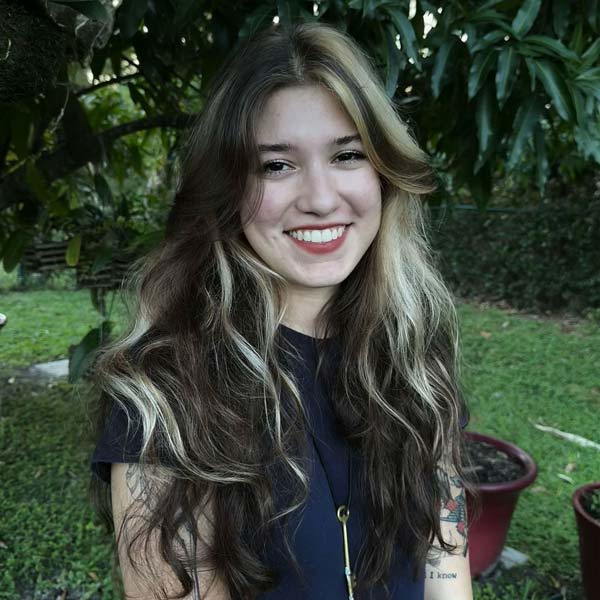
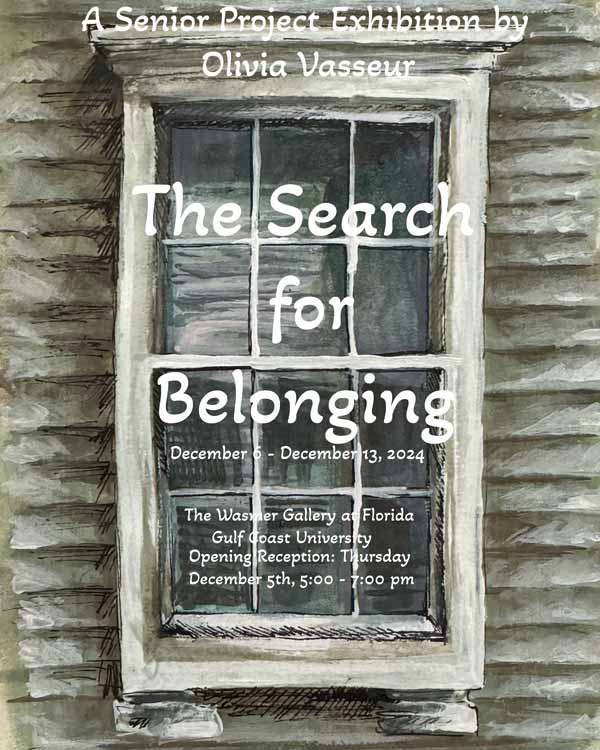
My project delves into my search for belonging and how people, experiences, and places have influenced my found sense of self. The concept of belonging is a multifaceted, deeply personal experience that influences our relationships with the people around us and our physical environments. Exploring this topic was not just about me individually finding a place in the world but also understanding the web of connection that influences our found identity. Through my mixed media paintings, I capture my sense of belonging, taking place within the familiar American landscape. I have found that a sense of belonging relies heavily on stability, which reshapes our relationships within our surroundings and communities. I explore the importance of connection with nature and the physical environments around me, as well as how the idea of nostalgia has changed the things I find comfort in. These connections I have fostered allow me to form a sense of peace, which I hope to be found within the counterbalance of the chaotic layers of life within my pieces. As I have created, elements from my past and present come together to form a surface of the emotional landscape where I have found my belonging.
The idea of belonging is something that has become very important to me. It is very personal; everyone’s experiences alter where and how they find a sense of belonging. My personal feelings of nostalgia convey a lot of attachment to things that help me achieve that sense of belonging. These include aspects of my childhood and symbols that allude to a sense of Americana as well as the coast. In creating my body of work, I drew upon my memories- including the small-town landscapes of my travels, aspects of my own and my family’s childhoods, and other experiences that have impacted me and the areas I grew up around. I used this sense of nostalgia as a source of comfort, which is how I have found myself in that sense of belonging and stability.
Each painting is created using layers of acrylic and oil paints, as well as a variety of other mixed media aimed at increasing the texture and depth of each piece. The objects I have used as painting surfaces include canvas, reclaimed wood, a barn door, corrugated plastic, corrugated roofing metal, diamond plate sheet metal, street signs, and windows. The diversity in the painted surfaces I am working with spread from traditional to reclaimed wood, inviting the viewer to reflect on the work and their connection with the environment around them. By incorporating objects such as street signs and windows, I am introducing elements that are as symbolic as they are familiar. The industrial metal used speaks towards the contemporary developed landscape while the use of wood and barn doors embodies the ideals of rural Americana. Some of the more major works are made to have a very intentional sense of collage, the layered images helping to portray that complicated sense of nostalgia that can trigger the sense of belonging.


